Trout
now browsing by category
Posted by: Warren Prior | on October 14, 2012
Montana Nymph
Montana Nymph |
|
|
|
|
Materials |
|
| Hook | Long Shank Nymph 6 to 12 |
| Tail | Rabit Fur Olive or colour of choice |
| Body | Chenille olive or colour of choice |
| Legs | Hackle Olive |
| Thorax | Cactus Chenille |
| Wing Case | Body Colour Chenille |
| Head | Black cotton whip finish and cement |
Tying Instructions |
|
| Dress hook with thread and tie in a small clump of Rabbit fur. Any colour from black olives to brown.Tie in the body chenille and wind forward to 3/4 up the shank. Tie off on top of the hook as this piece will later be used as the wing case.
Tie in a hen hackle at this point (hackle must match gape of hook about 30% wider) Then tie in the cactus chenille wrap forward leaving room for the head and tie off. Wrap the hackle carefully through the thorax about 3 turns and tie off. Pull the body chenille forward over the thorax to form the wing case and tie off at the eye. Make a neat cotton head and cement making sure the eye does not become clogged with cement. Bret gave us a good tip for cleaning the eye of the hook, he pulls the left over piece of hackle through the eye. This cleans it up very nicely. |
|
Posted in Fly Tying, Fresh Water Fly, Trout | No Comments »
Posted by: admin | on October 14, 2012
The Scrambled Egg
The Scrambled Egg |
|
A hybrid between a standard Crystal Dubbing Egg and Jim Pettis’s Unreal Egg |
|
|
|
|
Materials |
|
| Hook | Tiemco 2488H # 12 or # 14 |
| Thread | 6/0 Uni Thread – FL. Orange or Red |
| Under Body | Harline Dubbin, Inc. STS Trilobal Dub – Hot Orange |
| Overbody (Cacoon) | Wapsi Egg Yarn – Salmon Pink or Light/Faded Pink |
Tying Instructions |
|
| Step One:Tie in the thread in the middle of the hook shank.
Take note, rather use the least amount of Egg Yarn as you are using it to create a translucent ‘cocoon’. Cut a 8cm section of Egg Yarn – this is then split in the length as you will only be using half of the original diameter of egg yarn to tie this fly.
This section is then split lengthwise once more, keep the other section as this will be used in the next step. (You should be left with two ¼ pieces of Egg Yarn)
Tie this section in on top of the shank and secure with two turns of thread; the section you will be using must be facing toward the eye of the hook as you will eventually tie off at the back of the hook (closer to the bend)
Now split this tied in Section and then using your thumb and index finger, turn this split section on the shank so that it is now located at the bottom of the shank. Viewed from the top is should look like a Y. Step Two: Tie in the Section of egg yarn that was kept aside in step one on top and middle of the shank. Now take a couple of turns toward the eye of the hook to secure both sections of Egg Yarn ( the newly tied in section and that piece located on the bottom of the shank) The finished fly must be located in the middle of the shank so be sure to leave enough space behind the eye.
At this point you should have three ‘pieces’ of egg yarn sticking out towards the front of the hook over the eye. Step Three: Spin the dubbing onto the thread and form a round underbody the size of the actual egg.
Start in the middle of the shank, cover those wraps that secure the egg yarn and end off towards the back of the hook. Your thread should be located behind the egg body at this point as this is where you will tie in the Egg Yarn. Optional : Cut away any strands of dubbing that protrude past the actual body of the fly. Step Four: You now take each piece of each yarn individually and for the ‘cocoon’ around the dubbed body. Start with the section you tied in first and that is located on the top of the shank.
Pull it over the top and to the back of the dubbed body covering the top half of the body and while trapping it with two loose turns of thread, leave some slack in the yarn as to form a bubble in the material. You can also use a needle to ‘lift’ the Egg Yarn off of the dubbed body as to achieve the desired effect. Now repeat this step for the other two pieces of yarn covering the bottom half of the body.
Making sure that the egg yarn covers 90% of the body in a translucent ‘cocoon’, whip finnish and cover thread wraps with head cement.
|
|
Posted in Fly Tying, Fresh Water Fly, Trout | No Comments »
Posted by: Warren Prior | on October 14, 2012
Crippled Dun
Crippled Dun |
|
A dry fly which does well for trout. |
|
|
|
|
Materials |
|
| Hook | Dry Fly #10 to #18 |
| Thread | 6/0 or finer (colour of choice) |
| Chuck | Z-Lon Grey or Dark Grey polypropylene yarn |
| Body | Grey Z Lon Dubbing |
| Wing | White polypropylene yarn |
Tying Instructions |
|
| 1) Dress shank down to above the barb.
2) Tie in the chuck, this should be longer than the hook the hook. 3) Tie in the wing leaving enough room for the head (about 1/4 from eye) using figure of 8 wraps. 4)Pull the wings upright and secure in this position using a few wraps of thread around the base. 5)Return the thread to the point where the shuck is tied in. Dub the thread forming a tapered noodle. Note: When viewing from the top the dubbing should be twisted in a clockwise direction to prevent unwinding as it is wrapped around the hook shank. (reverse for Left Handed tyers) 6) Wrap the dubbing forward forming a tapered body. 7) Tie in the hackle just behind the wing with the tip toward the back of the fly. 8) Dub the hoohshank right up to the eye forming the thorax and head. 9) Now wrap the hackle forward, two turns behing the wing and two turns in front, Tie off and whip finish. 10) Pull the wing upward and trim just above he hackle tips. 11) Turn the fly and trim the hackle directly below the body forming an inverted V when viewed from the front. |
|
Posted in Fly Tying, Fresh Water Fly, Trout | No Comments »
Posted by: Warren Prior | on October 14, 2012
The Good Doc’s Beetle
The Good Doc’s Beetle |
|
A local dry fly that is especially deadly for yellowfish. |
|
|
|
|
Materials |
|
| Hook | Grip 12804 #12 to #16 |
| Thread | Black 3/0 |
| Upper Body | Sparkle Dubbing |
| Body | 2-3 mm Black High Density Foamb |
| Body Prep | Paint with Heritage Metalic Bronze |
| Legs | Brown or Furnace Hackle |
Tying Instructions |
|
| 1) Prepare the foam by cutting into strips with a craft knife. The top should be beveled at 45 deg on both sides. (width to suit hook size)
2) Paint the prepared strips on both sides with the bronz metallic craft paint and hang to dry. Before it hardens give an overcoat of Heritage Seal Skin. 3) Hang the strips to dry. 4) Dress the shank of the hook with thread and before the paint hardens tie in a strip of foam behind the hook eye flat side up. 5) Stretch the foam back toward the bend of the hook and tie down the foam in open turns finishing above the barb with an no. of tight wraps. 6) Strip the filoplume off the hackle and tie in at this point with the tip facing back. 7) Form a dubbing noodle and dub over the foam underbody forward to behind the hook eye. 8) Palmer the hackle forward to the same point and tie off. 9)Pull the foam body over the top and tie off just behind the hook eye. 10) Clip the excess foam forming the beetles head. |
|
Posted in Fly Tying, Fresh Water Fly, Trout, Yellowfish | No Comments »
Posted by: Warren Prior | on October 14, 2012
RAB
RAB |
|
One of SA’s most famous dry flies, the Red Arsed Bastard |
|
|
|
|
Materials |
|
| Hook | Dry Fly 12-16 |
| Thread | Red 6/0 or finer |
| Tail | Hackle Fibres |
| Body | Pheasant Tail |
| Legs | Pheasant Tail |
| Hackle | Brown or Furnace and White or Cream Hen |
Tying Instructions |
|
| 1) Dress the hook shank with thread.
2) Tie in a mixture of white and brown hackle fibres above the barb. 3) Wrap the thread forward 1/3 of shank. 4) Tie in a bunch of about 5 pheasant tail fibres at their mid point with the tips pointing forward. 5) Wrap the butt ends of the pheasant tail forward forming a body and tie off . 6) Spread the pheasant tail tips evenly around the hook shank and secure in position with a few wraps. 7) Tie in the Brown hackle just ahead of the legs with the shiny side and tip facing back. 8) Tie in the other hackle behind the hook eye with tip facing forward (leave enough room for a small thread head) The thread should now be just behind the hook eye. 9)Wrap the brown hackle forward to where the thread is. 10) Wrap the thread back through the hackle to just in front of the legs. Trim off the brown hackle tip. 11) Now wrap the white hackle back through the brown hackle toward the legs then wrap the thread forward to behind the hook eye securing the hackle in place. 12) Form a small thread head and tie off. |
|
Posted in Fly Tying, Fresh Water Fly, Trout | No Comments »
Posted by: Warren Prior | on October 14, 2012
MSK (Mikes Scalie Killer)
MSK (Mikes Scalie Killer) |
|
A yellowfish variation of the woolly bugger. |
|
|
|
|
Materials |
|
| Hook | Daiichi DHSS #3 or smaller |
| Thread | Chartreuse 3/0 or finer |
| Head | Tungsten Bead pref. faceted |
| Tail | Filoplume from Schlappen Hackle + Flash |
| Body | Sparkle dubbing |
| Rib | Fine Copper Wire (optional) |
| Wing Case | Flashabou |
| Legs | Teased out dubbing |
Tying Instructions |
|
| 1) Thread bead onto hook and dress the hook shank with thread to above the barb.
2) Cut a bunch of filoplume from the base of a hen hackle. Tie this in above the barb using the pinch method. 3) Tie in one strand of flash either side of tail as well as the copper wire for rib if desired. 4) Form a dubbing noodle at the tail tie in point and wrap forward 2/3 along hook shank forming the body. 5) At this point tie in the flash for the wing case on top of the hook. 6) Carry on dubbing in front of the flash right up to the bead. 7) Pull the flash over the top forming the wing case and tie off behind the bead. 8) Keep wrapping the chartreuse thread behind the bead forming a neat chartreuse band behind the bead. 9)Whip finish and apply a small amount of head cement. 10) This fly is very effective for Natal Scalies especially when the water is not clear and can be tied in browns and greens. |
|
Posted in Bass, Fly Tying, Fresh Water Fly, Trout, Yellowfish | No Comments »
Posted by: admin | on October 14, 2012
CDC & Elk
CDC & Elk |
|
This version of the Elk Hair Caddis was developed by Hans Weilenmann. |
|
|
|
|
Materials |
|
| Hook | Dry Fly Hook #12 to #20 |
| Thread | Tan 6/0 |
| Body | CDC |
| Wing | Elk or Deer Hair (Klipspringer works well) |
Tying Instructions |
|
| 1) Tie in a spade shaped CDC feather by its tips above the barb of the hook.
2) Wrap the CDC forward around the hook shank forming the body. 3) As the CDC gets closer to the hook eye more and moor loose strands of feather appear. Stroke these back away from the hook eye and tie off just behind the eye. Leave enough room for the wing and head. 4) Stack a small clump of Elk hair and tie in the wing with a few tight turns. The wing should not extend beyond the bend of the hook. 5) Form a neat head under the Elk hair, whip finish and apply a drop of head cement. |
|
Hans Weilenmann Fishing Instruction Quote |
|
| The CDC & Elk is a very versatile pattern. While originally designed to be a dry caddis imitation, it has proven to be much more than just a ‘better’ caddis pattern! It is by far my most productive dry to use during mayfly hatches, as well as my staple search pattern during hatchless periods. Fish it as an emerger in the film. Or as a straight wet. It has proven to cover the full spectrum of dry, ‘damp’and wet. As an extremely effective 2-materials 2-minutes-to-tie this is one hard to pass up pattern. I suggest you try it! | |
Posted in Fly Tying, Fresh Water Fly, Trout | No Comments »
Posted by: Warren Prior | on October 14, 2012
Natal Minnow
Natal Minnow |
|
This fly was originally tied by Robin Fick. Recipe courtesy of Eric Pattenden. |
|
|
|
|
Materials |
|
| Hook | #4 to #10 Long Shank |
| Thread | Red |
| Head | Black Thread |
| Tail | Black Hackle |
| Body | Red Thread |
| Wings | 18 Selected Mallard Flank Feathers |
| Hackle | Red Hen |
Tying Instructions |
|
| 1) Dress the hook with thread to above hook barb.2) Tie in the tail at this point. The tail length should be 1 to 1.5 times hook shank length.
3) From the tail tie in point dress the hook with Red thread to where the head would start and tie off. (Eric says that chenille should not be used as it is too bulky and the feathers would not lie flat.) 4) Sort the feathers into 3 groups of 6 equally sized feathers. the 6 tail end feathers should be the smallest and the head end feathers the largest. These must be the full length of the body and will end just past the hook bend. Measure the feathers against the hook and strip the fibres below the tie in point. 5) Tie in the first feather about 1/4 up the shank as shown in the picture above. The tip of the feather should be just past the hook bend. The feather must be parallel to the hook bend. Tie in two more matched feathers. If the feathers have a bias it should be downward. Then repeat on the back of the fly. Note: The stripped portion of the quill should extend to the next tie in point. 6) In loose turns take the thread forward to the next tie in point trapping the stripped stems to the sides of the hook. 7) Now tie in the next set of feathers as described above with the lining up with the first set. Then in loose turns bring the thread to the final tie in point behind the head. 8) Keeping the best feathers for the outside of the fly tie in the last set as before. This set forms the full body of the fly and should extend to the tips of the first set of feathers. 9) Next tie in a red hackle just in front of the last tie in point. After 3 or 4 turns tie off and form a neat head with the black thread. The red hackle should be forced back over the body feathers as the head is tied in forming a swept back collar around the body feathers. 10) Varnish the head with you favourite head cement. 11) The fly is traditionally tied with mallard flank feathers (partridge used in the demo tying sequence) Experimenting with different types of feathers can produce interesting results. |
|
Posted in Bass, Fly Tying, Fresh Water Fly, Trout | No Comments »
Posted by: Warren Prior | on October 14, 2012
Olive Tadpole (Plattie)
Olive Tadpole (Plattie) |
|
This fly is fished with a floating line in rip currents in surf, bays or estuaries. |
|
|
|
|
Materials |
|
| Hook | Stainless Steel 2xLong #1 to 2/0 |
| Thread | Clear Mono |
| Tail | A small bunch of Calf Tail with 2 strands Flash both Sides. |
| Body | Flash or sparkle dubbing. Mylar Tube pulled over hook eye tied in above barb |
| Eyes | Bead Chain tied in on top of hook just behind eye |
Tying Instructions |
|
| 1) Dress hook2) Tie in small tuft of deer hair above hook point – helps reduce tail wrapping
3) Tie in tail of marabou 2-3 times length of hook shank above deer hair. Make one wrap of thread around the marabou only to keep it concentrated on the top of the hook shank again helps reduce tail wrapping 4) Wrap lead wire along centre half of the length of the hook shank and double back wrapping second layer to make a “ball” shape. The lead results in a dipping action on the retrieve. 5) Tie in chenille at tail and advance thread to hook eye. In process of this build up small “cone” of thread in front of the lead wire this helps the chenille transition from the lead to hook shank and prevents lead sliding forward 6) Wrap chenille forward to hook eye to form the body 7) Tie off chenille, trim and whip finish Alternatively it can be tied in black. In South Africa this fly imitates platana tadpoles that are often olive. Hence the name Plattie |
|
Fishing Instructions |
|
| Fish this fly over weed beds, along reed banks or in shallows using figure of 8 retrieve or short erratic pulls to create a darting movement. When fish are swimming circuits in the shallows allow the fly to rest on the bottom in the path of fish and give a short tug as the fish approaches.
(While fishing a lake one weekend there was a 2-3lb Brown cockfish that kept swimming a specific circuit through an area of the shallows, every time I tried to present a fly it spooked and disappeared for 15-20 minutes. Eventually I put the fly on the bottom and waited, as the fish approached I gave a 6 inch in tug this elicited a charging take and the fish was on!) |
|
Posted in Fly Tying, Fresh Water Fly, Trout | No Comments »
Posted by: admin | on October 14, 2012
Funnel Dun
Funnel Dun |
|
The Funnel Dun is a fly which Jack Blackman first introduced to us when we were still Natal Fly Dressers Society, Durban Branch – a long time ago. |
|
|
|
|
Materials |
|
| Hook | An up-eyed dry fly hook is preferred but a down-eyed dry fly hook works as well, sizes 12 to 18 |
| Thread | 6/0 – in colour to suit your chosen scheme |
| Thorax | Any dubbing material, usually darker than the abdomen. Hares Ear blend works well. |
| Hackle | Long barbuled cock hackle – colour to suit (I prefer a length of 1,5 times the hook shank) |
| Body | Soft fur dubbing of colour to suit |
| Tail | Same as for hackle – again 1,5 times the length of the shank. |
Tying Instructions |
|
| 1 : Place hook in vice, secure the thread and take it to a position just past the eye. Form a dubbing noodle with your selected material and form a neat thorax just behind the eye. The thorax should have a diameter of about a fifth to a quarter of the shank length.
2: Strip the flue off the hackle and tie the stem in at the back of the thorax, with shiny side out. Trim off the excess stem and wind the hackle backward (towards the hook bend) two to three times around the shank and tie off. Shape the hackles so that they form a funnel shape over the thorax. This is done by holding the hackle tips in the fingers of the one hand and winding the thread loosely up the barbules with the other hand and then back again. This should keep the hackle in the funnel shape. If the thread is wrapped too tightly the barbules will splay in all directions. 3: Wind the thread to a position above the barb and tie in three or four barbules for the tail. By holding the barbules down with your left hand, wind the thread to about a quarter of the way around the bend. Take the thread back to behind the hackle.Step 4: Dub body material onto the thread and form a tapered body by winding back to the tail. Tie off at the tail with a whip finish. The tie off can also be done with a yellow colour thread to imitate an egg laying insect. Happy hunting! |
|
Posted in Fly Tying, Fresh Water Fly, Trout | No Comments »

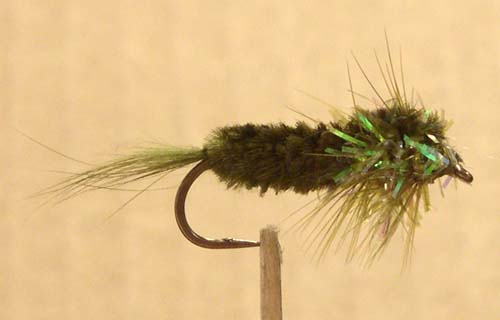
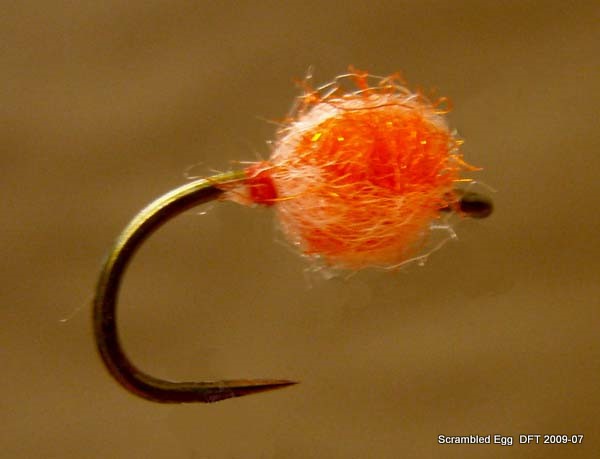
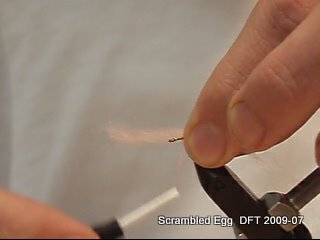
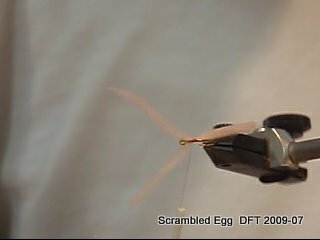
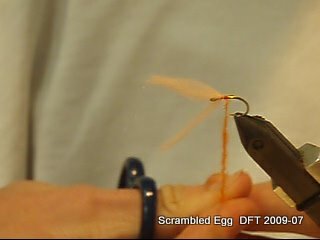
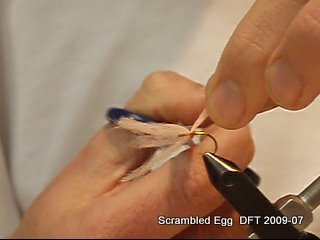
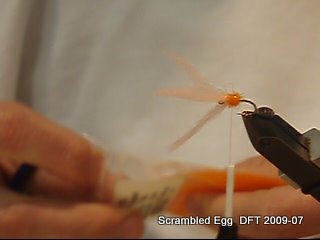
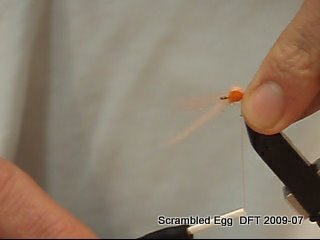
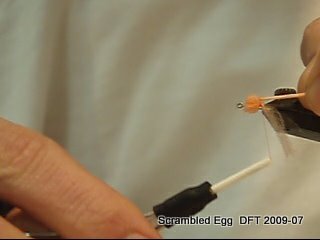
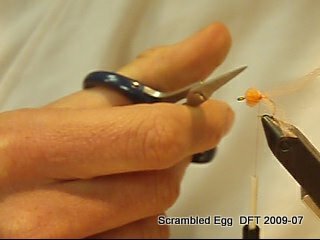
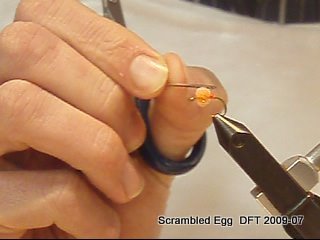
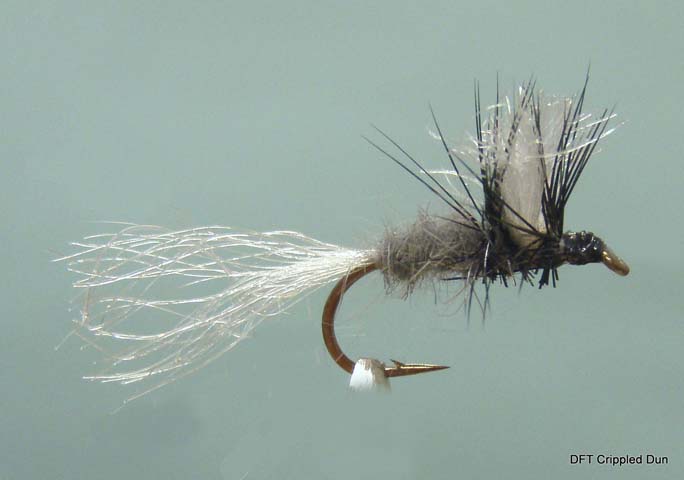
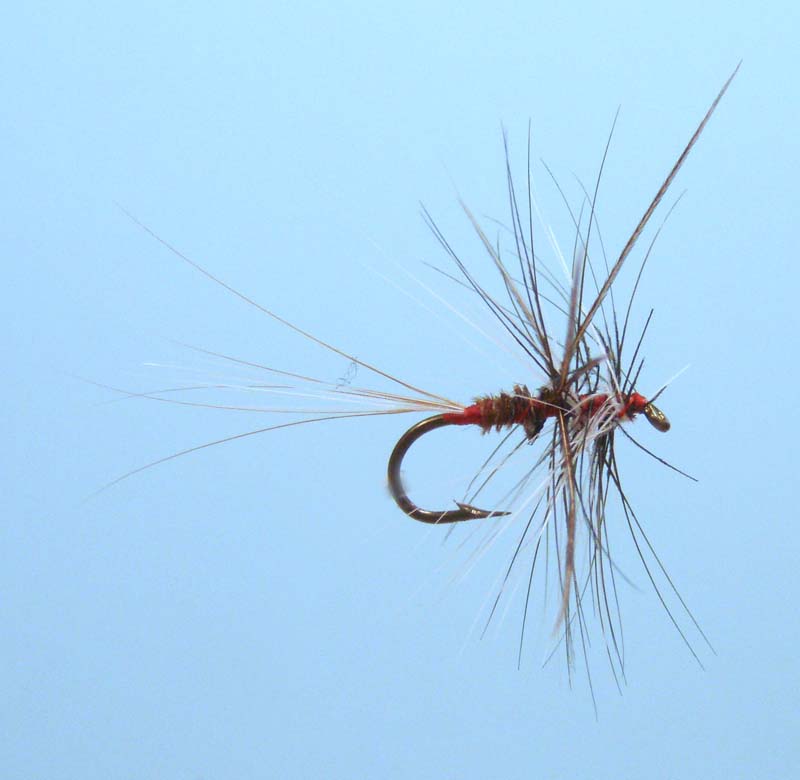
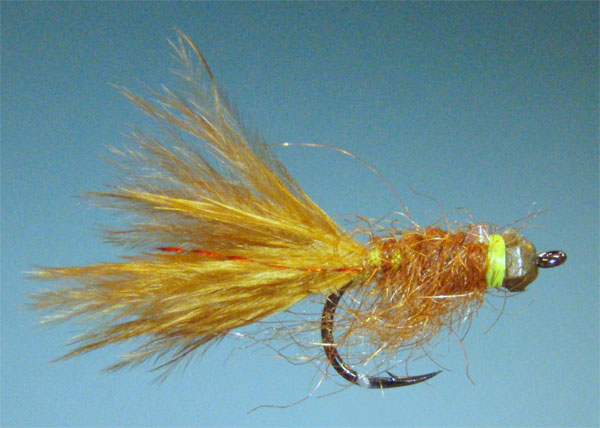
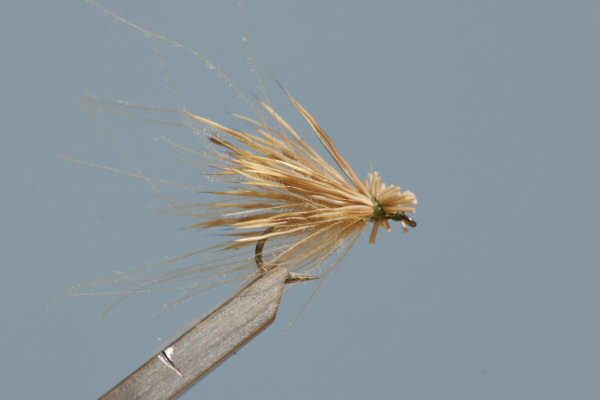
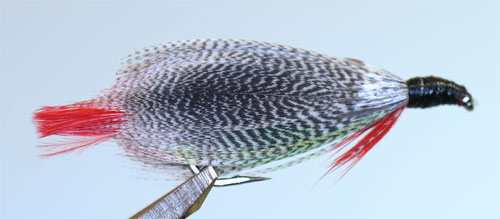
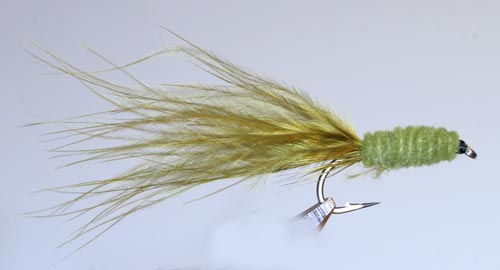
 D5 Creation
D5 Creation